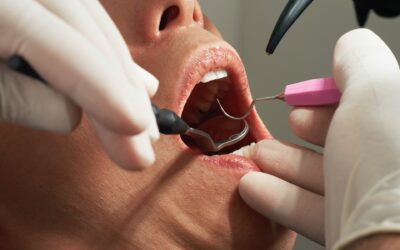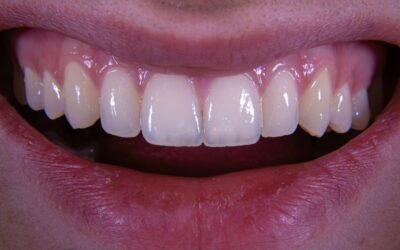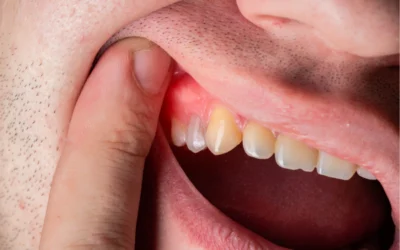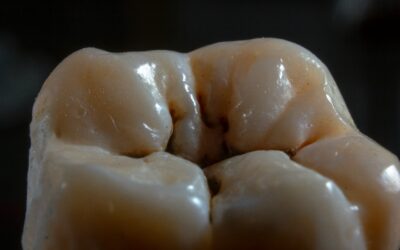Dental Bridges
An alternative solution for missing teeth
Dental bridges are a popular dental restoration option that can help restore the appearance and function of your teeth. A dental bridge is used to replace one or more missing teeth and is anchored to the surrounding teeth or dental implants. They can help prevent further tooth loss, improve your ability to eat and speak and enhance your overall dental health and well-being.
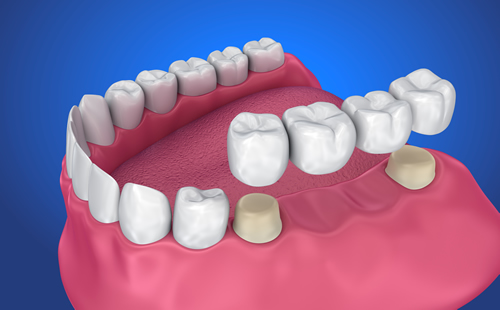
Benefits Of Dental Bridges
Dental bridges offer several benefits for patients who have missing teeth. Some of the most significant advantages of dental bridges include:
- Improved appearance: Dental bridges can help restore your smile and improve the appearance of your teeth.
- Enhanced dental function: Dental bridges can help improve your ability to chew and eat, which can help maintain your overall dental health.
- Prevent further tooth loss: Dental bridges can help prevent adjacent teeth from shifting into the gap left by the missing tooth, which can cause bite problems and further tooth loss.
- Long-lasting results: Dental bridges can last for many years with proper care and maintenance.
- Affordable: Dental bridges are an affordable dental restoration option compared to other options such as dental implants.
Dental Bridges Procedure
The process of getting a dental bridge typically involves two appointments with your dentist. During the first appointment, the supporting teeth (or tooth) are prepared by removing a small amount of tooth structure. Impressions of the teeth are then taken, which are sent to a dental lab where the bridge is custom-made. Your dentist will also create a temporary bridge to wear while the permanent bridge is being made.
At the second appointment, the temporary bridge is removed, and the permanent bridge is fitted and adjusted for proper fit and bite. Your dentist will then permanently bond the bridge to the supporting teeth using dental cement. Your dentist will also provide you with instructions on how to care for your new bridge, including proper brushing and flossing techniques.
Caring For Your Dental Bridge
To ensure your dental bridge lasts for many years, it is essential to practice good oral hygiene. You should brush twice a day and floss daily to remove plaque and food particles that can build up around the bridge. You should also avoid chewing on hard or sticky foods that can damage the bridge or cause it to come loose.
It is also important to visit your dentist regularly for check-ups and cleanings. Your dentist can examine your dental bridge and surrounding teeth to ensure they are in good condition and recommend any necessary repairs or maintenance.
Stop Hiding Your Smile
They can help restore your smile and therefore improve your self-confidence. It’s important to fill any gaps in the teeth as if a gap is left open, over time the surrounding teeth can lean and become crooked. If cared for properly, bridges can last for many years. However, if the surrounding natural teeth begin to decay, this can impact longevity. If you want to know more please contact Cheslyn Hay Dental Practice today.
WHAT OUR LOVELY CLIENTS SAY…
Latest News & Updates
Stay informed with the latest news, tips and updates from Cheslyn Hay Dental Practice including expert advice, treatment insights and everything you need to keep your smile healthy.
A toothache that flares up the moment your head hits the pillow can make sleep impossible. Night-time...
Sensitivity is a common and short-lived side effect of professional teeth whitening. It often appears in the...
All dental practitioners will agree that missing your routine check-up appointment is detrimental to your...
We are in a new era of authenticity when it comes to cosmetic procedures and enhancing your natural smile is...
White spots on teeth can be just as concerning as dark spots, especially when they appear prominently on...
Noticing blood in the sink after brushing your teeth can be alarming, especially if it happens regularly....
Toothache can be one of the worst types of pain to manage day-to-day, making it hard to eat, sleep or focus....
Noticing your gums receding can be a cause for concern, in more ways than one. Left untreated, as the margin...
Seeing black spots on your teeth can be worrying, especially when they appear suddenly or in visible places...
Book An Appointment For Private Dental Care in Cannock
"*" indicates required fields




Dental Bridges FAQ
What Is A Dental Bridge?
A dental bridge is a dental restoration that is used to replace one or more missing teeth. It consists of a false tooth (or teeth) that is supported by two dental crowns on either side of the gap.
What Are The Types Of Dental Bridges?
There are three types of dental bridges: traditional bridges, cantilever bridges, and Maryland bridges. Traditional bridges involve two dental crowns on either side of the gap with a false tooth in between. Cantilever bridges are used when there is only one tooth next to the gap, and the false tooth is supported by a single dental crown. Maryland bridges involve a false tooth that is held in place by metal or porcelain wings that are bonded to the back of adjacent teeth.
How Are Dental Bridges Installed?
The process of installing a dental bridge typically involves two appointments. During the first appointment, the supporting teeth (or tooth) are prepared by removing a small amount of tooth structure. Impressions of the teeth are then taken, which are sent to a dental lab where the bridge is custom-made. At the second appointment, the bridge is fitted and adjusted for proper fit and bite, and then permanently bonded to the supporting teeth.
How Long Do Dental Bridges Last?
Dental bridges can last for many years with proper care and maintenance. On average, they can last 5-15 years, but some bridges can last even longer.
What Are The Benefits Of Dental Bridges?
Dental bridges can help improve your appearance, speech, and ability to chew and eat. They can also help prevent adjacent teeth from shifting into the gap left by the missing tooth, which can cause bite problems and further tooth loss.
Are Dental Bridges Permanent?
Dental bridges are a permanent restoration and cannot be removed like dentures. However, they may need to be replaced after several years if they become worn or damaged.
How Do I Care For My Dental Bridge?
To care for your dental bridge, it is important to practice good oral hygiene by brushing twice a day and flossing daily. You should also avoid chewing on hard or sticky foods, and visit your dentist regularly for check-ups and cleanings.
How Are They Created?
Each bridge is carefully hand-crafted by a skilled technician to emulate the natural teeth as closely as possible. They may take the place of one or more missing teeth and the results can be excellent with good function and aesthetic results. With careful maintenance, a well-made bridge can last many years.



